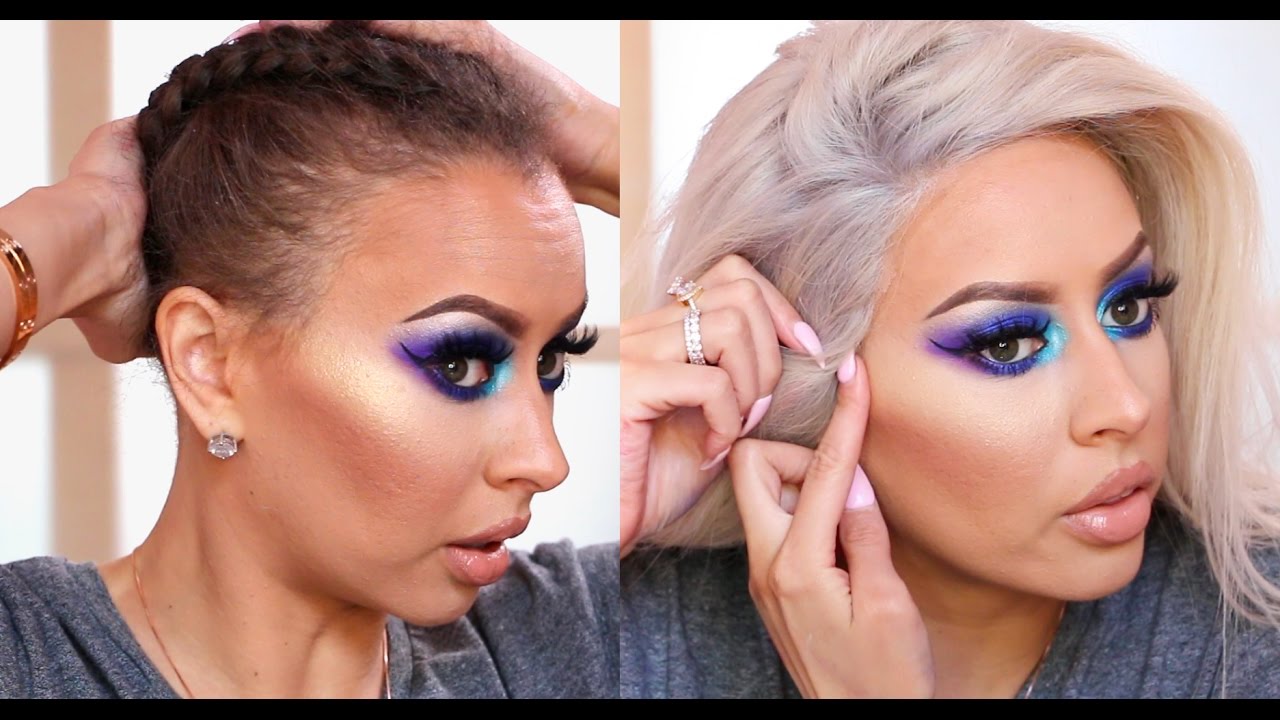|
Lace front wigs have additional benefits over other types of wigs, such as a more natural hairline. Wig-cap wigs cannot achieve the same realism as lace fronts. Additionally, you can adjust where your part lies on most lace front wigs, giving you greater versatility with your look.
​ Wigs are a fantastic styling choice for women because you can go daring with color without ruining your own hair. Plus, you don't have to wait months (or years!) to achieve the length or chop it all off-- wigs let you get any look instantly. Just be sure that you know how to wear a front lace wig correctly!
This type of wig must be worn correctly to avoid a disastrous look, and more importantly, any health issues. For example, actress Countess Vaughn developed a severe infection from the glue used to keep her wigs in place.
​Unfortunately, she waited several months before getting medical help. To prevent damaging our hair while still being able to wear lace fronts, we spoke with Brittany Johnson, a licensed hairstylist for Mayvenn. Scroll down for some tips from the experts on how to properly wear a lace front wig. ​ MEET THE EXPERT Brittany Johnson is a licensed hairstylist and senior content manager for Mayvenn. Mayvenn is a 100% virgin human hair wig and extension company.
​Secure Your Natural Hair
After you have prepped your own hair, section it off into manageable chunks before braiding or wrapping it flat against your scalp. Applying the adhesive will be much easier this way and prevent any damage to your own strands.
​Use the Right Adhesive
It is essential to use the right type of glue if you want to know how to secure a lace front wig. Find one that is created especially for lace fronts, such as Hair Queen's Meltdown Invisible Lace Bond Glue ($28). lash glue and ( dreadful craft project) glues are not appropriate substitutes.
If you've never used a new adhesive before, do a patch test to ensure you're not allergic to the glue. If you plan on swimming in your wig, use waterproof adhesive instead. You could also try double-sided tape for shorter wear periods. Don't Forget to Give Your Wig the TLC It Deserves
Wigs are made of human hair and need to be properly cared for - just like the hair on our heads. shampoo, condition, detangle, and protect your wig from heat styling regularly to make it last longer. The timeline for how often you should wash your wig depends on how much product you use and what type of adhesive you use, but air on the side of caution by washing it every two weeks maximum.
Take Care of Your Hair If you only wear your wig for a week or two at most, then you can go without shampooing and conditioning until you take it off. However, if you plan to keep it on for extended periods of time, then you'll need to regularly wash it so that your natural hair doesn't become dry and brittle. Be sure to use a hood or bonnet dryer to properly cleanse and dry your tresses to avoid bacteria growth. ​ Don't Wear Your Wig for More Than Six Weeks at a Time Even though most experts recommend you take a break after six weeks, don't be afraid to remove it sooner. In fact, some lace front wig adhesives are only meant for short-term use, so the maximum amount of time you should wear your wig depends on the adhesive type used. If you want to wear your wig for several weeks straight, don't use a short-term adhesive. After the six-week mark is up though, it's best to take off the wig and give your hair some post-wig love in terms of cleansing thoroughly, deep conditioning, and moisturising. Practice Gentle Removal Methods
When removing your lace wig, do so patiently to avoid any damage to both the wig and your skin. Use a designated adhesive remover for lace front wigs, applying enough of it to soften the glue. If you feel resistance while taking the wig off, apply more remover and wait several minutes before trying again. Johnson also reminds us that "after you safely remove your wig, don't forget to cleanse the excess glue off of the lace." You can use diluted rubbing alcohol in addition to the adhesive remover for this final step, then shampoo and condition it as normal afterward.
If You Can, Remove Your Wig While You're Sleeping Although it might be convenient to sleep in your wig, doing so isn't the best idea for your natural hair. Johnson gave me the following advice: "Removing your wig is only possible with most temporary adhesive solutions, like Got2B Glued Gel ($4). This product is a strong gel that can safely be removed every 1-2 days and still helps secure and blend the lace on a wig's hairline." In addition, if you often work out or live in a humid place, it may be simpler to use less-stiff adhesive solutions—like gel and a Wig Grip ($15)—to attach your wig and take it off every night. Your natural hair will get some relief as well! A Reminder Although lace front wigs can offer you a glamorous look and make your daily hair routine much easier, don't become overly dependent on them. Wigs are an accessory; your hair is one-of-a-kind. Give your tresses the time and attention they deserve, then a wig will continue to be an improvement, not a replacement, for your natural hair. ​ Photo and Instagram Post Credit: Byrdie
0 Comments
Leave a Reply. |
�
categories
Categories
All
|



 RSS Feed
RSS Feed